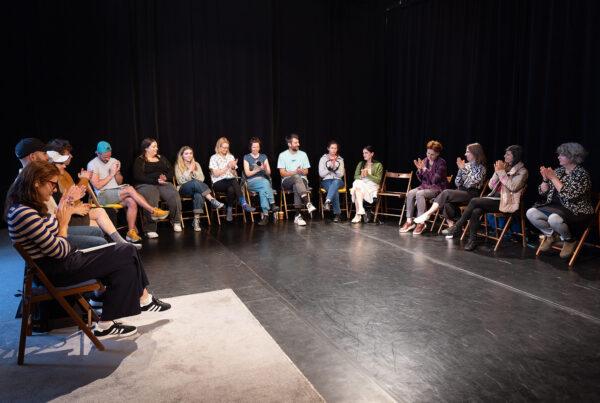The Words and Actions of TYA.
Or: How to Reach Out and Touch the Dream.
By Barbara Pizzo, Vice President of ASSITEJ Italy
On January 7th, 2019, the members of ASSITEJ Italy were sent the first e-mail of the year. And the internet was entrusted with the delivery of a message that carried much more than our best wishes for the new year; it carried a seed. A small, yet powerful seed, hopefully able to grow and develop far from its roots and generate unexpected beauty. The email read:
2018 saw an outburst of hate and violence that appear to be expanding and becoming stronger in our daily life. This outburst has been feeding on what preceded and nourished it, resulting in an environment where episodes of hate and hostility are occurring more and more often, in a constantly growing variety of forms and expressions.
And instead of being torn down, new walls are being built.
On any given day, any one of us is likely to witness at least one episode of intolerance —whatever its nature or scope— although it could often go unnoticed or unperceived because of the paradoxical banality of evil.
It would be great if theatre itself could represent a stronghold of resistance; what if the antidote to hate were theatre for children and young people, addressing the issues of the new generations, so crucial for the world to come?
However necessary, we know this is going to be just a drop in the ocean. Our time requires those reservoirs of necessary soul-saving beauty to not only be there and stand stronger than ever, but to open up, take new steps and expressly oppose hate. But gently.
On these bases a working group was formed within the Association, aimed at addressing strategies to counter hate, at analysing what is being done and spreading the word to make it grow and develop; at inventing, discovering, and triggering new initiatives; at branching in and out of the Association, generating specific reflections and concrete actions to be activated and nurtured individually and as a network.
Theatre’s artistic and intrinsically relational character makes it a natural candidate to oppose hate and to reaffirm human rights, even more so if it speaks to the new generations. As tales that are not handed down tend to inevitably get lost, implicit truths, no matter how important, could fail to be acknowledged if unperceived or taken for granted for too long. Therefore, the essential mission and social function of theatre and theatre for children and young people need to be expressly reaffirmed and kept alive. This physical and metaphysical place of encounter, community, discovery and surprise; of bridges being built, of stories being twined, of listening to ourselves and the others, of reaching out to touch a dream, of favouring new visions, is extraordinary and powerful. In these times, it is not only called to express these encounters artistically, but to play a substantial part in forging the new generations, and to build an imagery “other than” the dominant one. On stage and around the stage.
The email goes on:
When we welcome the spectators to the theatre, what images shall we choose? What words? And what images or words shall we choose when we talk with the spectators about the show they’ve just watched? Are there any workshops focusing directly or indirectly on this, or practices that invite our audience to exchange, integrate, reciprocate, support?
A very good instance of theatre “around the stage” that overcomes national boundaries is the project Take a child to the theatre. This is one of the initiatives we need to promote and spread the word about, regardless of its fundraising activity: the fact that we tell the public about it, raising awareness about the need to support the right of all children to art and culture is, in itself, a key social act. By doing this, we reaffirm that the function of theatre, of its cultural and artistic expression, is one of children’s basic needs, as it plays a major role in their development as individuals and citizens of the world—it is a natural form of opposition to educational poverty, as well as to indifference and intolerance towards others regardless of the distance between them and of whether it is of the physical or of the cultural kind. And to tell people about this or other projects, initiatives, actions, even the smallest ones, does exactly that, with full sense, meaning, and form. Because if words are important, in today’s world, where hate speech is one of the emergencies to be faced, their use and choice is even more important.
Undoubtedly, there are topics that express a collective approach and imagery in a clearer and more urgent way, for example the issue of migrants is an inevitable emergency, not of one or just a few countries, but of the whole world. The opposition to hate and violence can be made clear in a number of ways through and around theatre for children and young people; these oppositions are just as many as the ones manifested by hate and violence, as far as topics, practices and storytelling are concerned. And the ways of theatre are to be imagined, acted, and told at both an individual and collective level.
On a small and large scale. Just like seeds: from a blade of grass to a whole forest.
Translation from Italian: Letizia Olivieri



